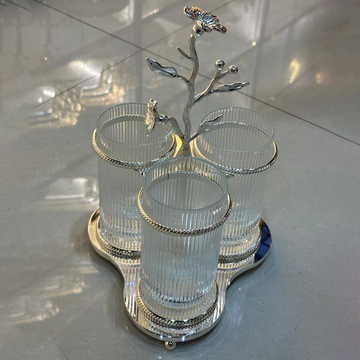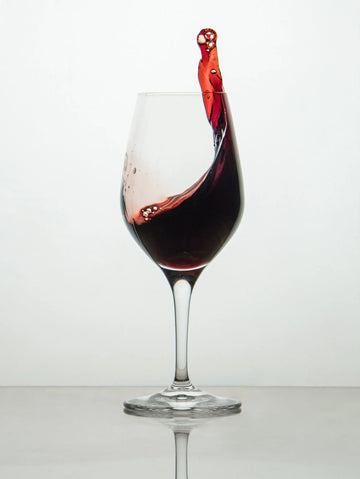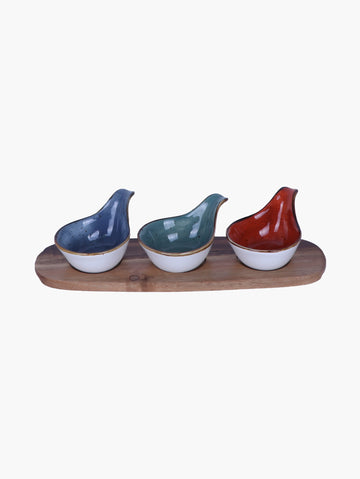Glassware plays an important role in our daily lives. From drinking glasses placed on the kitchen counters to vases for decoration and laboratory equipment, Glass is everywhere in our daily lives. Have you ever thought about the process of making glassware? The process of making glass is an amazing combination of art, science, and cutting-edge technology. In this piece, we'll walk you through the steps of making glassware and look into the various materials, techniques that are used, and the techniques utilized for modern-day glass production.
What is Glassware?
Before getting into the fabrication process, let's look at the definition of glassware. Glassware consists of items constructed predominantly of glass. This could include everything from cups and bowls to instruments for laboratory use,as well as decorative items. Glassware is appreciated because of its durability, clarity, and versatility. It is dependent on what you intend to use it for, and it can be plain and practical or complex and elaborate.
The Raw Materials of Glassware
The process of making glassware starts by selecting the raw material. The most important component of glass is silica sand, also known as silicon dioxide. Additional materials are used to increase the properties of glass, for example:
- Soda Ash (sodium carbonate) to lower the melting point
- Limestone (calcium carbonate) to improve durability
- Alumina to increase the durability
- Oxides of metal to color or have certain properties
The raw materials are then carefully taken into account and then mixed in order to make what's called a mixture.
The Glass Melting Process
When the batch has been prepared and is ready to be taken to a furnace. The furnace then heats the mix to extreme temperatures, generally at 2500degF (1,370degC), until it melts and forms a molten viscous liquid. The process of melting glass is essential since it is the foundation of the final glassware.
Modern glass production facilities often employ continuous melting furnaces in order to maintain the glass that is melting in a constant temperature. This assures consistency and speeds up production that is crucial to massive-scale production.
Shaping and Forming Glassware
After melting, the heated glass is now ready to form into different forms. There are many ways for shaping glassware, based upon the product to be made.
1. Blow Molding
One of the oldest methods can be described as blow molding that involves putting an ounce of glass that has been melted is put in the mold, and then the air blows into it in order to expand the glass so that it can form the mold's size. This technique is typically used to make jars, bottles as well as drinking glasses.
2. Pressing
With the pressing process using a plunger, the plunger presses the molten glass into themold This method is perfect to make thicker glass products like plates, bowls or serving dish.
3. Drawing and Rolling
In the case of flat or sheet glass,The molten glass is pulled through rollers for creating homogeneous panes. This process is utilized to create windows, mirrors and tabletops.
4. Freehand Glassblowing
In the case of artisan or specialty glassware, skilled artisans can make use of hand-blown glassblowing to produce exclusive, distinctive items. This technique combines imagination and skill to create beautiful glassware.
Strengthening the Glass
Following the shaping process and forming, glassware goes through the process of annealing. Glassware is slowly cooled inside (a specially designed oven) to ease internal stress due to the speedy cooling of the glass during making. In the absence of annealing, glassware will be more vulnerable to breaking or breaking.
The process of annealing is crucial to make sure that glass is strong and able to endure daily use without losing the integrity of the glass.
Cutting, Polishing, and Decorating
After cooling and solidifying, the glassware can be further enhanced by various processes of polishing:
- Grinding and cutting Glass that does not need to be taken away while sharp edges are polished.
- Polishing The surface is refined to increase clarity and appearance.
- Engraving or etching Logos or designs could be etched in the glass by lasers or acids.
- Coloring and coat glassware can be colored, painted, or coated to enhance the aesthetics or for functional reasons (such as protection from UV).
These final touches are particularly crucial for branded or decorative glassware.
Quality Control and Inspection
Prior to packaging and delivered, it is subject to stringent Quality control tests. The inspectors inspect the product to find any flaws, like cracks, air bubbles or other deformities. Quality glassware has to meet safety and endurance standards, particularly when used in food service laboratory, lab, or medical environments.
Sustainable Glass Manufacturing
In the past few years, sustainable glass manufacturing is become a top priority. A lot of companies are now focusing on environmentally friendly practices. For instance:
- Recycling Cullet (broken glass) returned to the production process
- Modern furnace technology
- Eliminating emissions and waste
These measures not only benefit in the protection of the environment but also lower the cost of production, which makes glassware less expensive.
Conclusion
The question is, how is glassware created? It's a detailed method that blends craft with chemistry, innovation, and craftsmanship. From the sourcing of raw materials through the shaping, annealing and finally, every step makes sure that the finished item is functional as well as stunning.
Knowing how glassware is made helps you appreciate daily items you use, no matter if it's just a simple drinking glass or a intricately created vase. While sustainability and technology develop, the glassware market is constantly innovating while maintaining traditions which have existed for many centuries.







